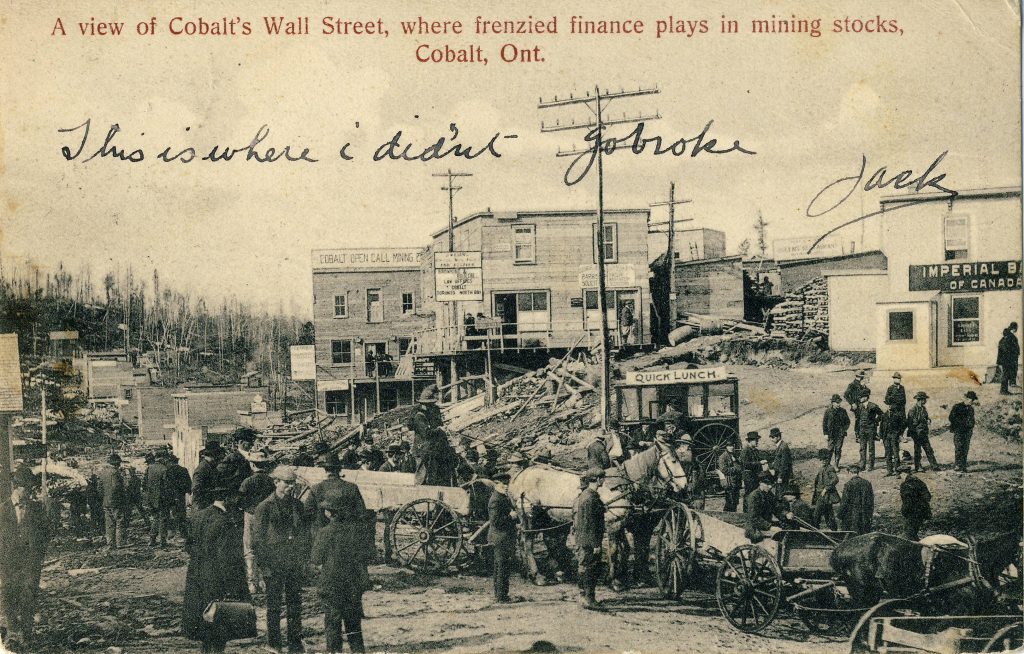It is well known that postcards are windows into the social life of the early 20th century, but it’s easy to neglect what they have to tell us about the worlds of commerce, finance and industry. Canada’s mining business, which was developing into its modern form around the turn of the last century, is an example — hopefully the first of several to be featured on our blog.
While everyone knows about the Klondike gold rush of 1898, it is less often remembered that an equally serendipitous discovery in 1903 quickly transformed a remote corner of northeastern Ontario into the world’s largest silver producing region. By 1908, thousands of hopeful “miners” had poured into the suddenly world-famous town of Cobalt, a few miles west of Lake Timiskaming. That Cobalt’s silver boom coincided almost exactly with the worldwide postcard craze means that there is an almost endless supply of postcard views for collectors of ephemera from this fascinating period in Canada’s history. Many of them have messages from miners, visitors and assorted hangers-on that recount personal experiences of boomtown life.
A whole network of commercial infrastructure quickly arose in the Cobalt district, supporting not only 10,000 newly-arrived residents but the mining industry itself. The postcard in Figure 1 nicely captures the commercial aspects of this moment in time. Entitled A view of Cobalt’s Wall Street, where frenzied finance plays in mining stocks, the Copp, Clark Ltd. collotype image shows almost every aspect of the mining finance business in action:
- The building at the left houses the stock market: Cobalt Open Call Mining Exchange.
- The building at centre is the equivalent of today’s downtown skyscraper, housing professional services firms: the assayer, the law offices of Browning & Boultbee (“Cobalt – Toronto – North Bay”) and two other law firms.
- To the right are the financial services offered by the Imperial Bank of Canada (one of many banks in town).
- In the rear, at right, is the Queen’s Restaurant, where business deals could undoubtedly be made in quiet comfort (if one had time; otherwise it was the Quick Lunch cart in the foreground — the “food court” of its day).
The reality of the whole situation, for many people, is suggested by the sender’s inscription across the face of the card: “This is where I didn’t go broke”. It was undoubtedly very easy to do so if you weren’t careful. On the reverse, “Jack” engages in a bit of eye-rolling as regards a companion who was apparently a bit more “into it” than he was: “Byron is out speculating in the rain this morning on a broncho”.
Of course, with modern communications, the majority of the mining finance activity that this “Wall Street” card represents would today be performed in Toronto rather than locally. But, at least in microcosm, the various functions of Bay Street (or Wall Street) are encapsulated in this image.
Also shown below, as Figure 2, is a bifold (double) postcard by Warwick Bros. & Rutter of Toronto (no. 4942), posted October 8, 1908, not long before the 1909 fire that destroyed much of the town (click to enlarge).
(Andrew Cunningham, TPC #1424)


